
table of contents
- Types from A - E
- Types from F - J
- Types of K - Q
- Types from R - Z
- frequently asked Questions
Every year in late summer, the mushroom pickers go out into the woods. Then the mushroom season begins. But not every mushroom is edible. We have compiled the characteristics of the most common types of mushrooms.
In a nutshell
- Mushrooms play an important role in the natural cycle
- they grow in forests as well as on meadows, fields and in parks
- only mushrooms that can be safely identified as edible mushrooms should be collected
- almost every mushroom has a poisonous doppelganger
- Mushroom advisors give help
Types from A - E
Oyster mushroom (Pleurotus ostreatus)
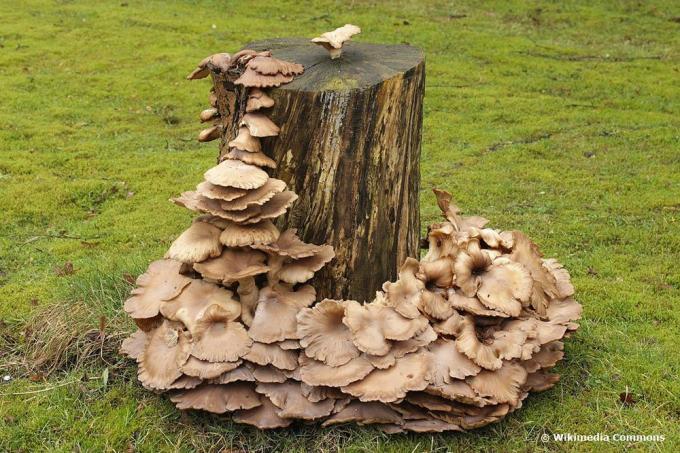
- Occurrence: on the trunks of deciduous trees
- Period: October to February
- Can be confused with: with other non-toxic mushrooms
- Use: edible, young hats with good taste
- Handle: short, thick, hard, white meat
- Hat: 5 to 15 centimeters in diameter, initially shell-shaped, later flat, dark gray to blue-gray, white lamellas
Note: This type of fungus can attack living trees. He is considered to be the cause of white rot.
Birch mushroom (Leccinum scabrum)

You can contact this user here.
English | español | français | italiano | македонски | മലയാളം | português | +/− derivative work: Ak ccm (talk), 2007-10-13 Leccinum scabrum (Bull.) Gray 12300 crop, edited by Plantopedia, CC BY-SA 3.0
- Occurrence: often in forests, parks, gardens
- Period: July to October
- Can be mistaken for: with the edible poplar grouse
- Use: young specimens tasty, raw poisonous
- Stem: 8 to 15 centimeters long, high, slender, covered with black scales
- Hat: 4 to 15 centimeters in diameter, hemispherical, gray-brown, whitish tubes
Note: Selling mushrooms that have been collected in the forest is prohibited!
Birch red cap (Leccinum versipelle)
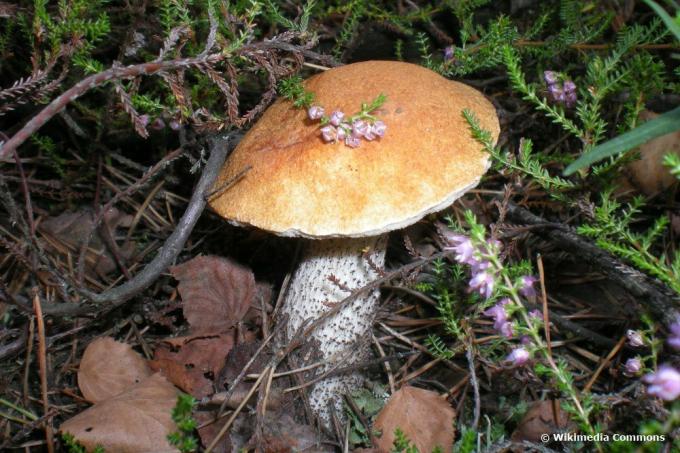
- Occurrence: in coniferous forests interspersed with birch trees
- Period: July to September
- Can be confused with: with other edible red cap species
- Use: good edible mushroom, poisonous when raw
- Stem: 8 to 22 centimeters long, white with black scales, turning black-blue when cut
- Hat: 5 to 20 centimeters in diameter, hemispherical, orange-yellow to light red
Thick-skinned potato bovist (Scleroderma citrinum)

You can contact this user here.
English | español | français | italiano | македонски | മലയാളം | português | +/−, 2009-09-03 Scleroderma citrinum Pers 55647, Edited by Plantopedia, CC BY-SA 3.0
- Occurrence: often in deciduous and coniferous forests
- Period: July to November
- Can be confused with other poisonous potato bovist species
- Use: poisonous
- Fruiting body: 3 to 12 centimeters in diameter, similar in shape, color and size to a potato, initially white-yellowish, later purple-black fruit mass
Note: The entire fruit mass of the potato bovist disintegrates into a powder over time.
Types from F - J
Fly agaric (Amanita muscaria)
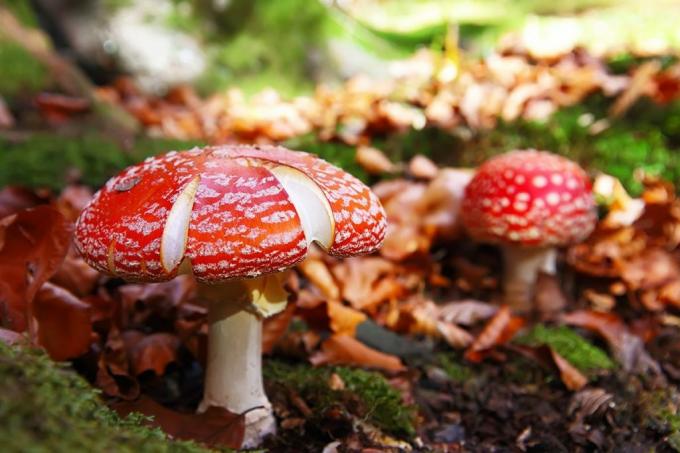
- Occurrence: often in deciduous and coniferous forests, prefers acidic soils
- Period: August to November
- Can be confused with: the poisonous king's fly agaric
- Use: very toxic
- Stem: 10 to 25 centimeters long, slender, white, thickened at the end, flabby, hanging ring
- Hat: 8 to 20 centimeters in diameter, hemispherical to slightly domed, bright red with white wipeable warts
Note: Forty different toadstools are known in Europe. They are among the most poisonous types of mushrooms.
Flaky-stemmed witch's boletus (Boletus erythropus)

- Occurrence: often in deciduous and coniferous forests
- Period: June to November
- Possibility of confusion: a noticeable change in color prevents confusion with other types of mushrooms
- Use: excellent edible mushroom, poisonous when raw, rarely mady
- Stem: 4 to 12 centimeters long, bulbous, densely covered with red flakes
- Hat: 6 to 20 centimeters in diameter, hemispherical, dark brown, velvety tubes with red openings
Note: Witch mushrooms instantly turn blue-black when cut. This spectacular change in color has no effect on the value of the edible mushroom.
Gallen-Röhrling (Tylopilus felleus)
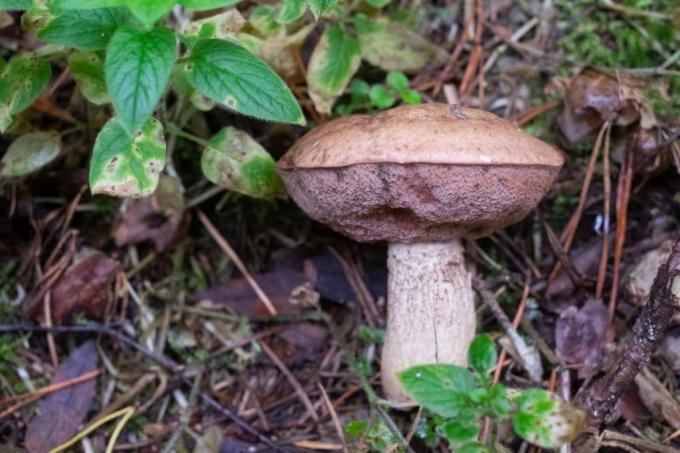
- Occurrence: often in coniferous forests
- Period: June to October
- Can be mistaken for: with young specimens of the boletus
- Use: inedible
- Stem: 8 to 12 centimeters long, strong, light to olive brown, covered by a coarse-meshed net, white flesh
- Hat: 7 to 12 centimeters in diameter, more domed with age, pale spines on the underside
Honey fungus (Armillaria mellea)

- Occurrence: in clumps on dead trunks of conifers
- Period: June to November
- Can be confused with: with sulfur heads and Schüpplingen
- Use: good edible mushroom, only hats can be used, raw poisonous
- Stem: 8 to 14 centimeters long, thin, flaky, lightly covered with dark scales
- Hat: 4 to 14 centimeters in diameter, hemispherical to slightly arched, the edge rolled up
Note: Hallimasch is one of those types of fungus that also grow on living trees and can cause them to die.
Types of K - Q
Bald Krempling (Paxillus involutus)

- Occurrence: very common in deciduous and coniferous forests, gardens, parks
- Period: June to November
- Can be mistaken for: with the inedible velvet foot Krempling
- Use: highly toxic raw, can cause allergic reactions when braised
- Stem: 4 to 8 inches long, dirty yellow, glabrous, yellowish flesh
- Hat: 6 to 15 centimeters in diameter, rolled up, olive to yellow-brown, yellow lamellas, greasy spots on pressure points
Frilled mother hen (Sparassis crispa)

- Occurrence: mainly under pines
- Period: July to November
- Can be confused with the equally edible mother hen
- Use: excellent edible mushroom, needs to be fried or stewed for a long time
- Fruiting body: 20 centimeters high, 30 to 40 centimeters wide, strongly curled, resembles a cauliflower
- Smell: aromatic, nutty
Note: This type of fungus attacks the roots of living pine trees and causes brown rot.
Chestnut boletus (Imleria badia)
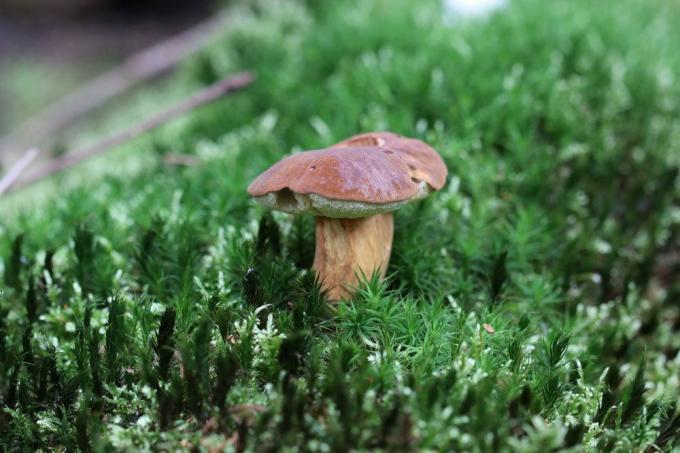
- Occurrence: often in coniferous forests, less often in deciduous forests
- Period: June to November
- Can be confused with: with the boletus
- Use: very good edible mushroom, poisonous when raw
- Stem: 5 to 12 centimeters long, cylindrical, sometimes bent, firm in young specimens, pale yellow flesh
- Hat: 5 to 15 centimeters in diameter, dark brown, velvety surface of the hat, yellow to greenish-yellow tubes
Panther mushroom (Amanita pantherina)

- Occurrence: often in deciduous and coniferous forests
- Period: July to October
- Can be confused with: the poisonous king's fly agaric
- Use: poisonous
- Stem: 10 to 15 centimeters long, thin, white, flaky, fibrous, stem base tuberous with a distinct ring bulge
- Hat: 5 to 10 centimeters in diameter, hemispherical, dark brown with white flakes, the edge grooved
- Odor: radish-like
Note: Consumption of this type of mushroom can lead to hallucinations and impaired consciousness!
Chanterelle (Cantharellus cibarius)

- Occurrence: in deciduous and coniferous forests
- Period: June to November
- Can be confused with: the false chanterelle and the highly poisonous olive tree funnel
- Use: edible, excellent edible mushroom, very popular
- Stem: 3 to 6 centimeters long, yellow to whitish, white, firm flesh
- Hat: 33 to 10 centimeters in diameter, slightly arched, yolk yellow lamellas, edge irregular
- Odor: fruity
Note: Some people have an innate sensitivity to chanterelles. They react with severe stomach and intestinal complaints even when the smallest amounts are ingested.
Types from R - Z
Giant umbrella (Macrolepiota procera)

- Occurrence: in open forests, gardens and parks
- Period: July to November
- Can be confused with the edible saffron umbrella
- Use: when young it is a good edible mushroom, older specimens become woody
- Stem: 15 to 30 centimeters long, slender, stiff, fibrous-hollow, bulbous stem base, brownish scaly, ring can be moved
- Hat: 10 to 30 centimeters in diameter, umbrella-like, white flesh, wide scales
Reddish coral (Ramaria botrytis)

- Occurrence: in beech forests, on calcareous soil
- Period: July to November
- Can be mistaken for: with the edible red-yellow stinging
- Use: edible, young specimens with a good, peppery taste
- Handle: 3 to 6 centimeters long, lighter than the hat, white, brittle flesh
- Hat: 6 to 12 centimeters in diameter, more domed with age, pale spines on the underside
Red foot bolete (Xerocomus chrysenteron)
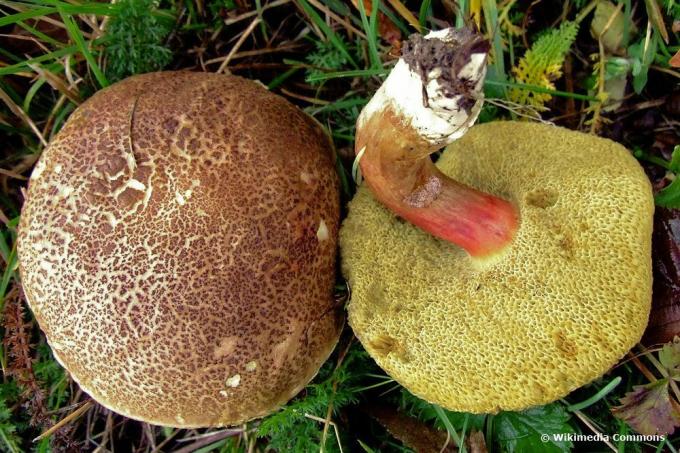
- Occurrence: often in deciduous and coniferous forests
- Period: June to November
- Can be confused with: the edible goat lip or the edible blood-red Röhrling
- Use: young specimens tasty, older ones inferior
- Stem: 4 to 8 inches long, thin, often bent, yellow to brownish, pale yellow flesh
- Hat: 3 to 12 centimeters in diameter, slightly arched, the skin of the hat torn open
Bread stubble mushroom (Hydnum repandum)

- Occurrence: in deciduous and coniferous forests, mostly in larger groups
- Period: July to November
- Can be mistaken for: with the edible red-yellow stinging
- Use: edible, young specimens with good taste
- Handle: 3 to 6 centimeters long, lighter than the hat, white, brittle flesh, peppery taste
- Hat: 6 to 12 centimeters in diameter, more domed with age, pale spines on the underside
Note: Older specimens of the mushroom species cannot be used due to their bitter taste.
Morel mushrooms (Morchella esculenta)
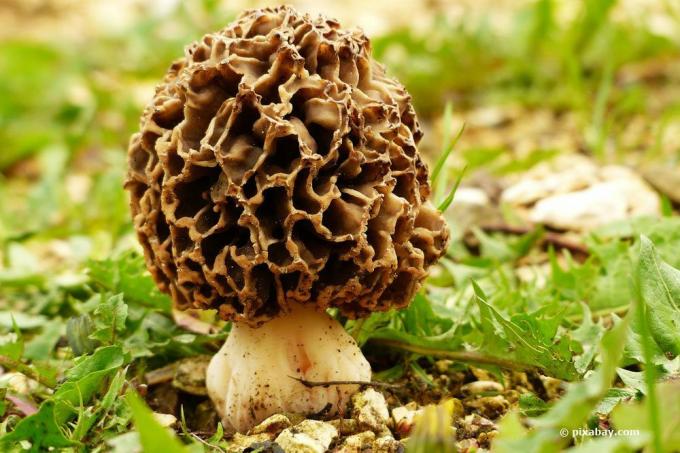
- Occurrence: in alluvial forests and gardens
- Period: April to June
- Can be confused with: the edible high morel and the poisonous spring lorel
- Use: edible, excellent edible mushroom for many types of preparation
- Stem: 4 to 10 centimeters long, fused with the hat, cream-colored, hollow on the inside
- White, fragile meat
- Hat: 5 to 12 centimeters high, 4 to 8 centimeters in diameter, egg-shaped, yellow-brown, surface irregular
Boletus mushroom (Boletus edulis)

- Occurrence: under spruce and birch
- Period: June to October
- Can be confused with: with the bile tubule
- Use: edible, excellent edible mushroom for many types of preparation
- Stem: up to 22 centimeters long, thicker at the bottom, covered in white with a gray net, firm, white flesh
- Hat: 8 to 22 centimeters in diameter, dark brown, yellow tubes
Note: Seven different types of boletus are known in Germany. Wherever toadstools grow, porcini mushrooms can also be found.
Purple blue (Laccaria amethystina)
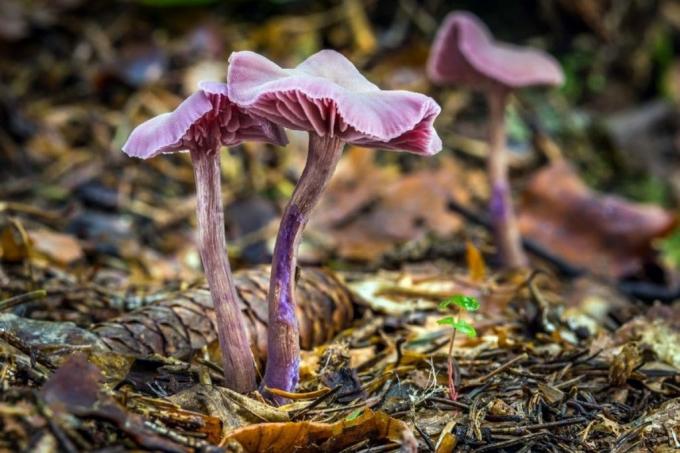
- Occurrence: often in deciduous and coniferous forests
- Period: August to November
- Can be confused with: the edible reddish lacquer funnel and the poisonous radish helmet
- Use: edible, not particularly tasty
- Stem: 4 to 8 centimeters long, thin, often bent, purple to brownish, glabrous, purple flesh
- Hat: 2 to 6 centimeters in diameter, amethyst blue when wet, dirty gray when dry, thick blue lamellas
Goat lip (Xerocomus subtomentosus)

- Occurrence: often in deciduous and coniferous forests
- Period: June to October
- Can be confused with: the edible red-footed boletus
- Use: young specimens tasty, often maddened
- Stem: 6 to 11 centimeters long, thin, often bent, yellow-brown, spongy in older specimens
- Hat: 3 to 12 centimeters in diameter, slightly arched, olive-brown, velvety, golden-yellow or lemon-yellow tubes
frequently asked Questions
The toxins of most types of mushrooms act very quickly. However, symptoms of poisoning can still occur 24 hours after a mushroom meal. Typical features are:
- nausea
- Dizziness
- Diarrhea
- sweats
- feeling hot
If you experience these symptoms, see a doctor or call an ambulance immediately.
In Germany there is no exact quantity limit. Collecting for personal use is permitted. It shouldn't be more than a kilogram. It is not allowed to pick mushrooms in national parks. When collecting mushrooms on vacation, note that in other European countries there are significantly stricter collecting regulations!
Numerous types of mushrooms are poisonous when raw. Also watch out for this danger during preparation. Hallimasch, for example, must not be tasted while cooking or frying. Pour away the cooking water from mushroom species that are poisonous when raw.
